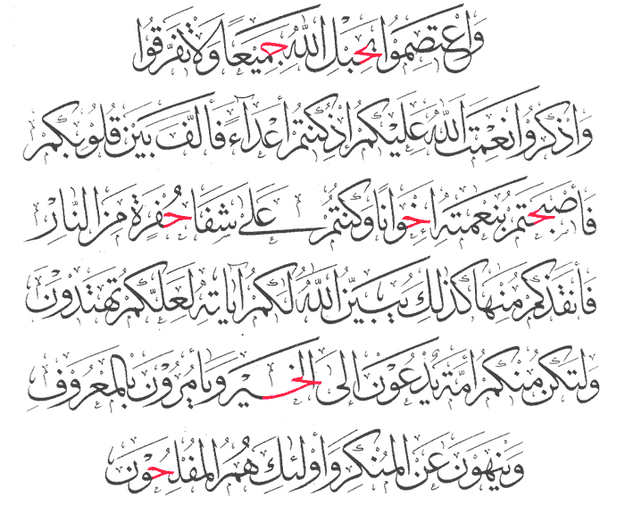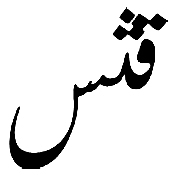Part of the Multiple Baselines series
Article: Multiple Baselines
An inventor can also respect tradition
Interview with Stéphane Boeuf, Senior Engineer at WinSoft International

Edo Smitshuijzen: Please tell us something about your background and your involvement in Arabic type technology: when did you start to work with Arabic and which software did you help develop?
Stéphane Boeuf: I’ve been an computer engineer for nearly 15 years and I always had a strong interest in scripts and languages. I’ve studied Arabic at the university for a couple of years, and when I joined WinSoft International in 2006, I saw it as an excellent opportunity to combine my personal interests with my professional strengths.
I have been working on the Middle Eastern versions of FileMaker and Adobe Dreamweaver and to a lesser extent on InDesign, and I also have been working on the shaping engine which is the basis for every Middle Eastern product done here at WinSoft International. In particular I added the OpenType support for scripts of India and South East Asia to the engine.
ES: Arabic type technology always had protagonists with extreme positions: on the one hand 'inventor/designers' who wanted to simplify and at the same time modernize Arabic type to make it as simple as possible to produce and on the other hand 'traditionalists' who believed that technology should simply accommodate as much as possible the calligraphic tradition. Today's type technology can come very close to create digital calligraphy. Do you have a view on this discussion?
SB: First, I wouldn’t oppose inventors and traditionalists; you can be an inventor and still respect the established tradition, and in my opinion what we need to do is to take the best from both views, because both are respectable.
They are often opposed because they don’t target the same people. The Arabic script is used every day by millions of people around the world in dozens of languages, and it is only natural that font designers acknowledge the need for modern and simple fonts. Moreover, many languages have adapted the original Arabic script to cope with extra letters or behaviors that don’t exist in Arabic, and these adaptations are sometimes incompatible with the traditional design. The primary object of a font is to allow people to read something, any font that achieves this is legitimate.
On the other hand, the Arabic script has a very rich history and Arabic calligraphy has reached a point that no other script has. In Europe, the traditional calligraphy is mostly a hobby, and not many people could read and even less write in Fraktur, Uncial, or any traditional style. The situation is very different in the Arab world and the calligraphic styles are still very much used. Designing such fonts and extending technologies in order to get a better support for these styles is very important.
ES: You expressed much interest in Arabic fonts. What is your professional challenge?
SB: I would say to improve existing technologies in order to truly support the Arabic calligraphic styles, or to participate in the creation of a new technology that would achieve this objective and have it adopted by many people, both font designers and software companies. Not being a font designer but the one who designs font engines, my perspective is different; I want to embrace as many fonts as possible and let as many people as possible use them.
ES: Adobe ME software is the only software I know of with an built-in Arabic shaping engine (characters are substituted automatically in the software). Why is this? (On second, thought I guess Quark also has a built-in shaping engine).
SB: Quark has an extension called ArabicXT which only works with proprietary fonts. Adobe ME products (InDesign, Photoshop, Illustrator …) were for a long time the only products available for professional Arabic users that would produce the same results on Windows and Macintosh.
In my opinion, things are changing now, the Arabic consumer market is growing and the technologies involved are mature, so many people take an interest in opening this new market. Microsoft did many efforts in that direction and now the Office products (Word, Excel …) have an adequate support for Arabic with specifics features dedicated to the language. No doubt others will soon follow.
ES: Creating Arabic fonts needed something like a lifetime dedication. The technology was solely in the hands of manufacturers. No independent Arabic font designers existed. The first available font editor that could generate Arabic fonts was FontLab, but this software is without additional customizing by the font designer effectively impossible to use for designing Arabic fonts if you want to stay mentally sane. Do you think it would be easy to make FontLab (or Fontographer) much more user-friendly for designing Arabic type?
SB: Designing an Arabic font can be tricky indeed. When you design a ‘modern’ Arabic font, with mostly linear connections, FontLab or Fontographer combined with Microsoft’s VOLT for the OpenType part will let you do the job correctly. FontLab alone does not support every kind of OpenType lookups you are expected to use when you design an Arabic font, so you would have to use VOLT and this adds complexity to the process. From what I have heard the next version of FontLab would support everything that is needed, hopefully with a nice and intuitive user interface.
Now, if you are planning to do a more traditional Arabic font style (like Nastaliq or Thulth for instance), you will face a much more difficult challenge, and I am not sure the tools are to blame here, but rather the font technology itself; OpenType is a technology that aims to support all the scripts on the planet, but for Arabic, its paradigm often creates unnecessary complications. The issues that usually arise with these fonts are kerning and dot positioning.
For instance, all the OpenType Nastaliq fonts I know, suffer from these problems; the following sample clearly illustrates this:
ES: If tools (like font editors) become too complicated, style development will stall. I think Tasmeem is a good example. Font technicians say it's the most efficient software to create traditional calligraphic fonts, but it's unlikely that new styles will ever be created that make full use of this technology. Do you agree? Tasmeem mostly extended its font collection with already longtime existing 'modern' fonts that do not need the Tasmeem font engine. The font of Saad Abulhab (Mehdi) is even explicitly designed not to make use of calligraphic font engine, or even a font engine specific for the Arabic script. Yet, this font is also part of the Tasmeem collection.
SB: Decotype (the company that developed the Tasmeem font engine) has been working with font designers (V. Tamari, H. Khoury, T. Nemeth, …) and studios (Arabetics, Hiba, …) to develop fonts for Tasmeem with a modern design.
Still, developing a traditional font is a very complicated matter. For instance, designing a complete Naskh or Nastaliq font such as the ones Tasmeem offers requires months, if not years of hard work and would require a ‘technical’ background.
ES: For Latin fonts there are name indications for the size of the character set to be expected in a font, like a titling font, a display font or a text font. Do you have a suggestion for a similar classification for Arabic fonts?
SB: I must say I have never thought about this; at the moment the main classification is between modern and traditional, it would be interesting to come up with a new classification that would help reconcile the supporters of both sides.
ES: The web is the great unifier of proprietary technology. Even stronger, the web made open source technology possible. Custom Arabic fonts for websites are now for the first time a realistic option. Do you think that the internet will make font technology for Arabic type more standardized ?
SB: At the moment, Unicode encoding with OpenType font technology is dominant both offline and online. Every web browser supports it, and the open source projects that deal with internationalization (like ICU, HarfBuzz, Pango, …) all support this combination.
To date the only alternative projects come from private companies (Tasmeem, Kelk, InPage, …), and no one has managed to impose its new standard.
I do believe, however, that the Internet should be at the center of any strategy; new models emerge, such as Software As A Service (SAAS), that will provide new and unexpected possibilities.
ES: You said you work on new font technology for Arabic type. Obviously, you are restrained by giving public information about this new development. But is anything you can tell us about this new technology?
SB: It is a bit too soon to talk about that now, but from everything I have said so far, it is clear that we are trying to close the gap that exists between typography and calligraphy. We would like to disclose more at the next Unicode conference this autumn, so I will be able to tell you more in a couple of months…
ES: The amount of software engineers (and very few type designers), like yourself who are deeply involved, knowledgeable and interested in the Arabic script is a rather limited amount of people. Maybe between 20 and 30 individuals on the globe. Do you know your colleagues sharing your knowledge and interest? Do you meet or discuss matters?
SB: I know some of the people involved in this field. Most of the time, they contact me because they found a bug in our engine … I’ve been in contact with John Hudson, Kamal Mansour, some people at Monotype and several others. I’m planning to go to the Unicode conference this fall, so I hope I’ll have the opportunity to meet them in person and get to know others.
For more info on the Multiple Baselines series: http://www.khtt.net/page/29897/en
